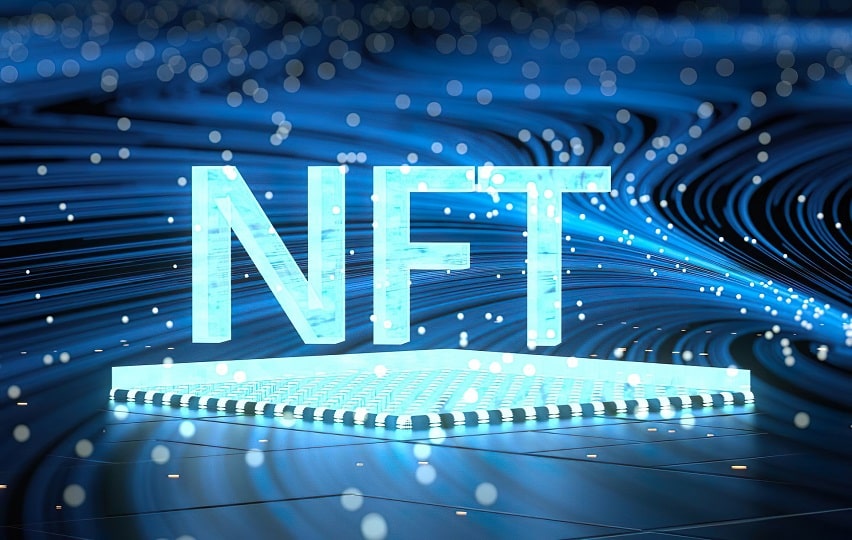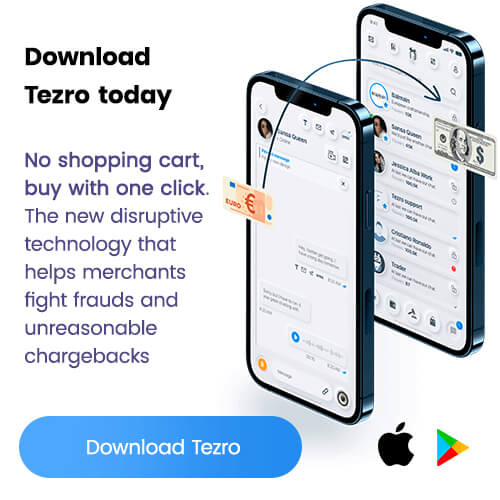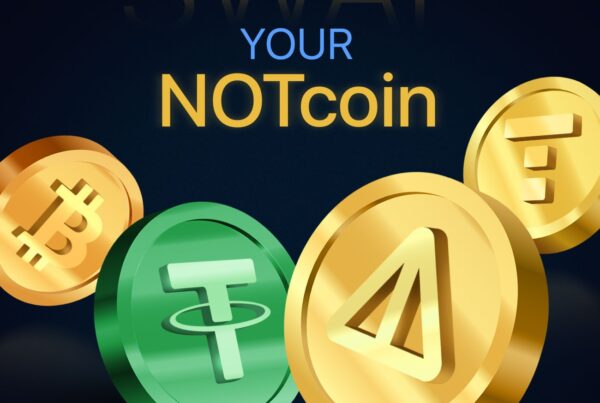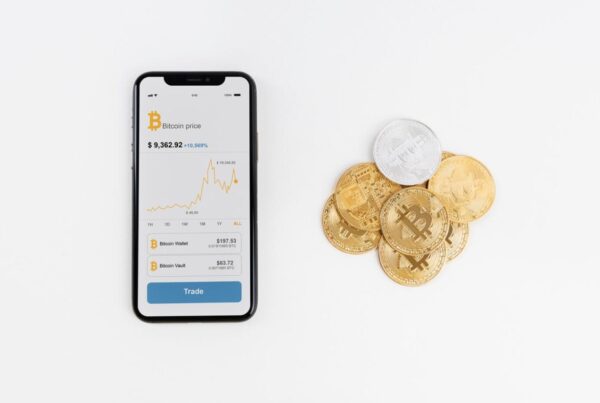Talking about Polygon vs. Ethereum is one of the most important conversations in blockchain today. Both platforms compete for supremacy in providing developers with a foundation for creating decentralized applications (dApps). Even though they share a common goal, they differ in several aspects.
In this article, we’ll explore the differences between the two platforms and discuss their individual strengths and weaknesses. We’ll also discuss the potential impact each platform could have on the future of blockchain and dApp development.
What is Polygon?
Polygon is an end-to-end platform enabling developers to create Ethereum-compatible dApps and protocols quickly. It utilizes Layer 2 scaling solutions such as Plasma, Optimistic Rollups, ZK Rollups, Validium Networks, and Optimistic Virtual Machine (OVM) to increase Ethereum’s transaction throughput, reduce gas fees, and improve overall scalability.
Polygon uses Ethereum as its base layer and allows developers to build dApps without needing to write the underlying code. This makes development faster and more efficient. Furthermore, Polygon offers low gas fees for transactions and is compatible with existing Ethereum tokens and smart contracts.
This network provides developers with tools such as the Polygon SDK, enabling developers to easily build dApps. Additionally, it offers the Polygon Marketplace, which allows users to purchase and sell applications.
Advantages of Polygon
Below are some of the major benefits of Polygon:
- Fast transaction: Polygon is built on a proof-of-stake consensus mechanism. This allows for faster transaction processing and confirmation times compared to traditional Ethereum blockchains. The Polygon network can process up to 7,000 transactions per second.
- Interoperability: Polygon allows for interoperability between different blockchain networks. This is because it is based on smart contracts, which allow for developing applications that can interact with other blockchains.
- Low transaction fees: This network does not charge transaction fees, meaning users can send transactions without incurring any additional costs.
- Scalability: Polygon is designed to be scalable and can handle large amounts of traffic without experiencing a decrease in performance or reliability. This makes it ideal for applications that require high levels of throughput.
- Uses Heimdall architecture: In addition to PoS, Polygon also uses Heimdall architecture. This architecture allows for the network’s sharding, making it more efficient and reliable.
- Multi-chain system: Polygon is a multi-chain system that allows developers to create their own sidechains. This allows for increased scalability and flexibility in terms of application development.
- Fully customizable tech stack: Since it’s built on the Ethereum network, developers have access to a wide range of tools and platforms. This allows them to create tailored blockchain solutions specific to their needs.
Disadvantages
Here are some drawbacks of Polygon:
- Not an autonomous blockchain: Polygon is not an autonomous blockchain. It relies on Ethereum for its security and scalability. This means that users are still subject to the security, scalability, and decentralization of the underlying Ethereum network.
- Limited use of MATIC Token: Polygon uses its native MATIC token to facilitate transactions on the network. However, this token is still relatively new, and its use cases are limited. Therefore, it may not be feasible for some applications.
- Market Cap/ Total Value Locked Ratio is high: Currently, the current market cap and total value locked ratio on Polygon is relatively high. This might lead to volatility in prices and make it difficult for investors to assess the network’s value accurately.
What is Ethereum?
Ethereum is a decentralized platform that allows developers to create and deploy applications on the blockchain. It is based on the Ethereum Virtual Machine, which enables users to write code in any programming language. This code is then executed securely on the Ethereum network. The platform also issues digital tokens and manages smart contracts, allowing users to transfer money securely without needing a third-party intermediary.
Ethereum is built on a hybrid proof-of-stake (PoS) consensus mechanism. This allows for faster transaction confirmations and lower transaction fees than other blockchain networks. This is a shift from the traditional proof-of-work (PoW) consensus mechanism, which required miners to verify transactions on the blockchain.
It’s worth noting that Ethereum establishes a peer-to-peer network between users, and its blockchain is secured through cryptography. As such, data stored on the Ethereum platform is immutable, meaning it cannot be altered or removed without consensus from all network users.
This network also includes various applications built on it, such as decentralized exchanges and tokens. These applications can be used for various purposes, including trading, payments, asset management, financial services, gaming, etc.
The Ethereum network has a native programming language called Solidity, which allows developers to create and deploy applications on the blockchain. This language is strongly typed, meaning all variables must be declared with a data type before use.
Advantages Of Ethereum
- Data coordination: Thanks to its decentralized architecture, Ethereum ensures data coordination between all participants in the network. This eliminates the need for a centralized third-party intermediary, enabling faster and more secure transactions.
- Rapid deployment: With Ethereum, developers can quickly deploy and test applications on the blockchain. This enables them to create and launch projects faster than ever before.
- Permissioned networks: Using the Ethereum network, developers can create public or private networks. This allows them to have more control over who can access their network and the data stored on it.
- Private transactions: Users can create private consortia with private transaction layers through this network. This allows them to achieve granularity of privacy and control over their data.
- Incentive layer: Through the Ethereum network, developers can create a system that punishes nefarious actors while rewarding legitimate ones. This provides an added layer of security and trust in the network.
Disadvantages
- Complicated programming language: Solidity, the programming language used by Ethereum, is quite complicated and can make it difficult for developers to create applications.
- Scalability Issues: Due to its decentralized architecture, Ethereum has scalability issues since each node needs to process all transactions on the network. This limits its transaction speed when compared to other blockchains. However, Ethereum 2.0 aims to address this issue with its sharding technology.
- High transaction fees: Ethereum has high transaction fees, which can be costly for users who need to make frequent payments on the network. This is due to the fact that miners are rewarded for verifying transactions on the blockchain.
- Scaling issues: As the Ethereum network grows, scaling issues can become more pronounced. This is because every node on the network needs to process all transactions and maintain a copy of the blockchain.
- Volatility: Just like any other cryptocurrency, Ethereum is subject to volatility due to its decentralized nature. This can make it difficult for users to predict the value of their Ether tokens.
Polygon vs. Ethereum: Differences
The Ethereum vs Polygon debate has been an ongoing one for years. Both platforms are decentralized, open source, and offer powerful solutions for developers. They support the development of decentralized applications (dApps) and smart contracts, making them attractive platforms for developers.
Both platforms use the proof of stake (PoS) consensus mechanism and are designed to facilitate the creation of blockchain-based applications. Ethereum is the most popular platform for developers, but Polygon is gaining traction due to its focus on scalability and interoperability.
The main difference between the two platforms lies in their approach to scalability and interoperability. Ethereum runs on a single blockchain, which can become congested and slow when too many transactions occur. Polygon enables developers to create multiple sidechains using the main Ethereum chain as a base layer. This allows for increased transaction throughput and scalability, making developing more complex applications easier.
Another major difference between Ethereum and Polygon is their approach to interoperability. Ethereum enables developers to connect their applications to various other chains and protocols, allowing them to create more powerful projects. Polygon takes this further by allowing developers to build bridges between blockchains and protocols easily. This allows users to move assets between blockchains without incurring excessive fees or delays.
Below are a few other parameters that create the difference between Polygon and Ethereum:
TVL (Total Value Locked)
Total Value Locked is the total value of assets stored on the blockchain. It’s an important metric for assessing the value of a blockchain platform. This metric represents the dollar value of all assets locked in smart contracts on the blockchain. It shows how much money is locked in the network and how popular it is among users.
Ethereum has a higher TVL compared to Polygon for several reasons. Firstly, Ethereum is the leader in terms of total users and transactions. Secondly, it has a much larger selection of tokens for trading and investing. This is due to its popularity and age. Finally, it has a larger selection of decentralized finance (DeFi) projects.
Market Cap
Market Cap is a metric that measures the total value of a blockchain platform. It’s an important metric for investors and traders as it reflects the current market value of a blockchain project. Ethereum is the second-largest blockchain by market cap and has grown significantly since its launch. Today, it has a total market capitalization of over $199.74 billion.
Polygon, on the other hand, was launched in 2017 as an Ethereum scaling solution. Today, its market cap stands at $10.7 billion. Experts believe this number will grow as more projects adopt Polygon’s solutions.
Consensus Mechanism
Both Polygon and Ethereum use the proof of stake (PoS) consensus mechanism. This is an energy-efficient, secure, and cost-effective solution for distributed ledger technology. It also allows users to stake their tokens and earn rewards from validating transactions on the network.
Ethereum uses a hybrid PoS/Proof of Work consensus mechanism, while Polygon is a pure PoS blockchain. This means that Ethereum users must have both Ether (ETH) and proof of stake tokens like ETH 2.0 to participate in the network, while Polygon users can only use native tokens such as MATIC or LINK.
Transaction Speed
Due to its pure PoS consensus mechanism, Polygon is able to process transactions much faster than Ethereum. This makes it an attractive solution for developers who need fast and efficient transfers of data. Additionally, because it runs on a sidechain, the transaction throughput can be increased significantly without compromising security or decentralization. Generally, the Polygon network can process 7,000 transactions per second.
In comparison, Ethereum’s blockchain is limited to 17.62 TPS. Even though Ethereum has constantly been improving its throughput, Polygon remains the clear winner in speed. The release of Ethereum 2.0 in 2022, however, promises to bring significant improvements to the network. This includes sharding and other scalability solutions that should give Ethereum the edge in terms of performance.
Gas Fees
We shouldn’t forget to mention the polygon gas fees vs Ethereum. Gas fees are the fees associated with executing transactions on a blockchain. In Ethereum, gas fees are necessary for miners to validate transactions and secure the network. Unfortunately, these fees have skyrocketed over the past year as the demand for Ethereum’s services has grown tremendously. Currently, Ethereum’s average gas fee is around $0.6562 per transaction.
Polygon, on the other hand, has much lower gas fees due to its scaling solution. Its sidechains are cheaper and more efficient than Ethereum’s mainchain, allowing users to reduce their transaction costs drastically. Currently, Polygon’s average gas fee stands at $0.0087 per transaction.
Tokenomics
Tokenomics is the study of tokens and their economic implications. Ethereum is home to a large selection of tokens, including the popular ETH, LINK, AAVE, DAI, and more. These tokenomics create a vibrant ecosystem of investments and opportunities for users.
Polygon, on the other hand, has its own tokenomics system. Its native token, MATIC, is used for staking and governance on the blockchain. Polygon also supports a selection of Ethereum-based tokens that can be transferred to the network with lower fees.
The main difference between the two blockchains is that Ethereum supports a much wider range of tokens, while Polygon is more limited in its tokenomics offerings.
Decentralization
Decentralization is an integral part of any blockchain and is an important factor to consider when choosing between Polygon and Ethereum. Both blockchains are highly decentralized, with thousands of nodes running their respective networks.
However, the decentralization nature of Polygon is questionable. On January 17th, 2023, 13 out of 15 validators voted for an overhaul of the network, which was effected. This was seen as an attack on its decentralization since all decentralized networks’ hard forks require a supermajority of validators, not just a majority.
On the other hand, Ethereum has largely succeeded in remaining decentralized and is still one of the most secure networks. Its consensus mechanism ensures that all nodes work towards the same goal and that malicious actors cannot take control of the network without 51% of the vote.
Blockchain Transaction Fees
Blockchain transaction fees refer to the cost associated with sending funds on a blockchain. Ethereum’s transaction fees are a bit high due to its popularity and the increasing demand for its services. Currently, Ethereum’s average fee is around $0.0004 per transaction.
In comparison, Polygon’s transaction fees are much lower. Its sidechains, powered by its scaling solution, allow for drastically reduced transaction costs. Currently, Polygon’s average fee is around $0.00002 per transaction.
Polygon vs Ethereum: NFTs
NFTs (non-fungible tokens) are digital assets that have become incredibly popular. These tokens are unique, indivisible, and non-interchangeable – making them perfect for art, collectibles, gaming items, and more.
Ethereum is the undisputed leader when it comes to NFTs. The majority of existing NFTs are based on Ethereum’s ERC-721 and ERC-1155 standards, making it the go-to platform for NFT projects.
Polygon has also gained traction in the NFT space. Its L2 scaling solution makes it a great platform for minting and trading NFTs due to its low transaction costs and high throughput. Polygon’s interoperability with Ethereum allows users to move their ERC-721 and ERC-1155 tokens to the Polygon Network while retaining their value.
Polygon vs Ethereum: DeFi
DeFi (Decentralized Finance) is an emerging segment of the cryptocurrency industry. It consists of financial applications and protocols built on blockchain networks, allowing users to access a variety of lending, trading, and investment services without relying on centralized entities.
Ethereum boasts a prominent position in the DeFi space as it is the most popular blockchain for building DeFi applications. Most decentralized exchanges (DEXs) and automated market makers (AMMs) are built on Ethereum. However, another blockchain called Polygon is quickly gaining traction in DeFi, providing users with an alternative platform to build their financial applications.
Polygon vs Ethereum: GameFi
GameFi is a new financial service that provides an alternative to traditional gaming platforms. It allows gamers to earn rewards and access various services by providing liquidity for pool staking on the Polygon blockchain.
Ethereum is the major blockchain used for gaming applications. The Ethereum Virtual Machine (EVM) allows developers to create smart contracts and develop their own games that can be played through decentralized networks.
Thanks to its higher capacity and speed features, Polygon is now being used to provide a more efficient and accessible gaming experience. It allows developers to build games more quickly than on Ethereum. It also offers users better scalability, lower transaction fees, and faster block confirmations.
Key Takeaways
- Polygon offers faster transactions, interoperability, low transaction fees and higher scalability than ETH.
- Despite that, it’s not an autonomous blockchain, MATIC token is limited and the market cap and total value locked ratio is high.
- Ethereum is the major blockchain used for gaming applications.
- However, Polygon allows developers to build faster games and also presents users with superior scalability, lower transaction fees and faster block confirmations.
Final Thoughts
Understanding the differences and similarities between Polygon vs. Ethereum is a surefire way to ensure you make the most of the two networks. If you want to explore the world of NFTs, Ethereum is your go-to platform. On the other hand, if you’re looking for a cheaper and faster blockchain network for DeFi or GameFi applications, Polygon is your best bet.
Ultimately, the choice between Polygon vs. Ethereum depends on what services you need from each blockchain. The key is to use this article as a guide and do additional research to find the best solution for your needs. Download Tezro app and store your crypto assets safely.















